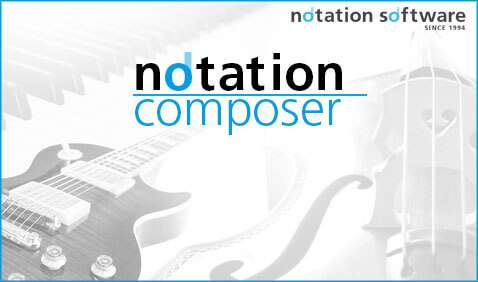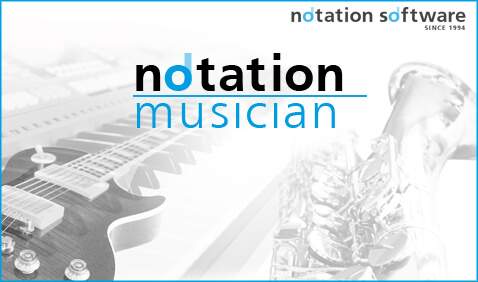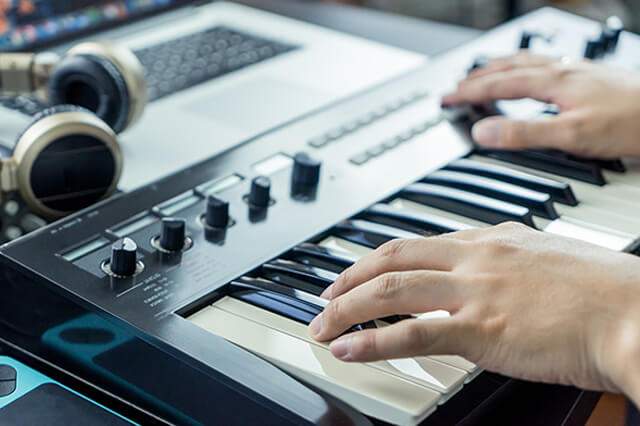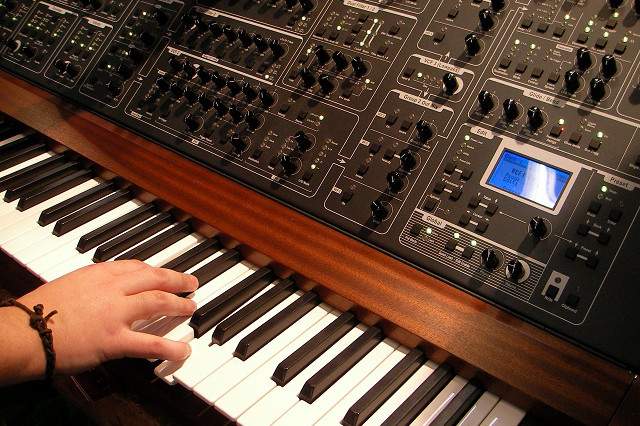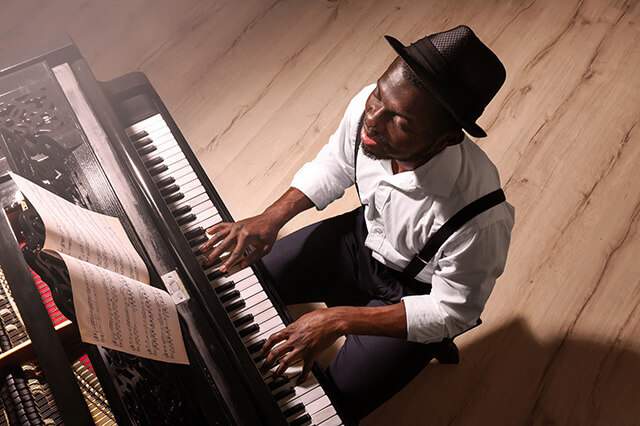Why should I buy Notation Software when MuseScore is free?
We often hear questions like
'Why should I buy Notation Software when MuseScore is for free?'
'What justifies the price of Composer compared to the free software MuseScore?'
'What are the features of Notation Composer which MuseScore does not have?'
Overview
In this summary we would like to emphasize the key essentials of notation composer which justify the price compared to the freeware MuseScore.
MuseScore is an open-source music notation program. Today MuseScore is free for everybody. MuseScore is now called MuseScore Studio. 'MuseScore Studio' offers great notation software features for freeware, with all the pros and cons of freeware. For 'MuseScore Studio' additional audio sound packages can be obtained from Muse Hub as plugins. As the new name 'MuseScore Studio' already points out, 'MuseScore Studio' focuses on studio music features.
For comparison, notation composer - in addition to a pure notation software program - offers DAW features which are important for musicians' day-to-day use, including practice
sessions and live performances.
Therefore, notation composer should be called 'Notation Composer Studio + Live' to indicate full support of everyday musicians in every aspect of their enjoyment, performance and creation of music
in all musical use cases, from the initial creation of music to their final live performance of music.
- Live Performance
- Sound
- Score of the MIDI Import
- Bandmates
- Playlist Management
- Band-in-a-Box plugin
- notation VST recorder
- Feature List
In notation composer a holistic VST support is implemented, featuring enhanced sound and routing capabilities for virtually endless instrument and sound experiences. In addition notation composer provides comprehensive MIDI features, allowing you to capitalize on the tremendous sound capabilities of modern digital workstations such as the Yamaha Genos or the Korg Pa5X series or any other digital MIDI device (e.g. keyboard). With the unmatched audio capabilities of these digital workstations, it is essential to support the full MIDI standard. notation composer supports all MIDI controllers- and SysEX features to control DAW settings such as DSPs, Reverb, Routing, Panorama, Pitchbend, etc. which MuseScore Studio does not.
For live musicians and bands an extensive support of playlists with stage-ready search functions allows a dynamic performance and swift reaction to audience input. An exclusive feature of notation composer is BandMates, with the capability to allow every bandmate to see
their own notation live and with beat cursors, which makes it convenient to perform live on stage. As with all other features of Notation, these high-end features are done in a very user-friendly interface.
A verbose documentation gives step-by-step instructions to help you learn quickly.
MuseScore Studio does not provide any comparable live performance support.
Let us point out the key essentials of notation composer vs. MuseScore Studio in detail:
Live Performance
In addition to a classical notation program like MuseScore Studio, notation composer can support musicians in performing live on stage, practicing anywhere, making music at home, or when composing live.
Typical scenarios are:
- A band plays on stage or during practice. notation composer adds the missing instruments in realtime to the song while the bandmates who are playing can see the beat cursor progressing on each bandmates' display. For such scenarios it is of the essence that the beat cursors and the sounds appear in realtime and in best sound quality on the users' sound devices (audio and MIDI devices). This synchronizing capability is not present in any other software.
- Recording a new part of a song by 'overdubbing' (notes, keyboards instrument/register changes etc.) by playing the MIDI keyboard while notation composer plays the remaining parts of a song
- excellent MIDI to notation transcription
- handling of the complete MIDI protocol for MIDI input and MIDI output (e.g. including SysEx MIDI events)
- unlimited number of MIDI devices can be connected
- routing of MIDI channels between the MIDI devices with no limitations
- VST interface support to smoothly work for MIDI and audio
- fine tuning of latency adjustments of the MIDI and audio devices to assure realtime synchronization in recording and playback
- support of powerful realtime interfaces like ASIO, WASAPI exclusive, JACK with the full range of audio and MIDI protocols
- MIDI import and export of the complete MIDI protocol (e.g. Yamaha XF-chords)
- basic DAW features included as well as connectivity to external DAWs
In this section we use MIDI files to demonstrate the strength of notation composer vs. MuseScore Studio for performance purposes.
Sound
Here are few sound examples of notation composer 5.1.0 vs. MuseScore Studio 4.4.4:
This comparison is made with the soundfont GeneralUser-GS. For MuseScore Studio, Muse Sounds are not used because:
Guitar Riff
Guitar bending directly imported from a MIDI file: notice the bending at ~ 4 seconds of notation composer. MuseScore Studio ignores bending in MIDI import.
Panorama and Balance: this sample starts with left speaker and at ~ 4 seconds it turns to the right speaker.
MuseScore Studio does not offer pan or balance control. The sound is always in the center.
Dancing Music
Please compare at 3 and 10 seconds. For notation composer the rhythms echo and fade away toggling between the left and right speakers for a very dynamic sound.
For MuseScore Studio these rhythms are static, with no kind of echoing nor fading away, nor any left to right speaker focus.
With MuseScore Studio this sound sample is 'flat' with a hanging tone at the end. The objective of the stereo movement of the sample does not come through.
Oh When the Saints
The glissando attack of the trombone at 0 seconds and 22 seconds is typical for this style of jazz song. At ~ 30 seconds the song fades out.
MuseScore Studio does not handle these sound characteristics directly given by the MIDI File. Even further due to an incomplete and wrong MIDI import, some instrument sounds persist and/or are de-tuned.
Rock Sample
The excellent more 'live' sound of notation composer is created by MIDI SysEx events with realistic 'fat' sounds and lots of pitch bends for the distorted guitars.
MuseScore Studio cannot handle MIDI SysEx events. MuseScore Studio in contrast sounds 'hollow'. The lead guitar with the characteristic distortion and bending is almost lost.
Score of the MIDI Import
notation composer, musician, and player create excellent scores directly from MIDI file import. Manual rework isn't usually required at all. For MuseScore Studio rework is significantly higher than for notation composer. We leave it to the user to validate it him/herself. The MIDI file 'Oh When the Saints' can be downloaded from here. Import it into notation composer (e.g. the trial version or the freeware notation player) and MuseScore Studio and compare the scores. The differences are significant. For notation composer only the instrument transpositions are recommend where MuseScore Studio requires a major rework (keys, lyrics, notes).
BandMates
notation composer introduces the capability to "cast" Parts to multiple band members with the BandMates feature. This feature allows for synchronized, paperless use of notation composer to display each band member's Part to them. The bandmates can see exactly where they are in the song progression with the beat cursor on each individual bandmates' screens. Audio is added for members who may be missing for a gig or practice, and keep the band's entire repertoire of music all on the band leader's laptop machine for easy access any time. If one of your bandmates is missing for a practice or performance, you can also un-mute their Part and let notation composer play that Part so that all of the band can always be heard. Of course, a band leader can provide the arrangements to the bandmates who can use the free notation player at home for practicing, or notation musician for some great practice tools. MuseScore Studio does not offer this feature.
Playlist Management
For live performances a playlist management feature is available to manage songs dynamically on stage. The playlist can run on an external device e.g. a tablet. Playlists can be unlimited in size. Search for songs alphabetically, by genre or by tempo. The band leader can use the playlist to manage songs for the band during practice or even in the heat of a performance. The playlist management tool is integrated with the BandMates feature. No additional tool to manage playlists is required. MuseScore Studio does not offer a playlist today.
Band-in-a-Box® Plugin
For more information see here.
notation VST recorder
notation composer includes a nifty VST for recording. This 'notation VST recorder' is a very simple audio recorder for live recording with the JACK interface. For recording, complex DAWs are not required. The Start/Stop recording is initiated by notation composer by one button. A save button stores the recording in 32-bit mp3 format similar to a regular audio export. This 'notation VST recorder' operates in realtime.
Feature List
This feature list shows important features of notation composer where the implementation in MuseScore Studio is rudimentary or does not exist today. Of course, MuseScore Studio contains some features which do not exist in notation composer but this is not the objective of this article. This list is not complete.
| Features | Feature Description | notation composer | MuseScore Studio |
|---|---|---|---|
| BandMates | Send individual Parts to devices of your bandmates | ||
| RealTime | Input and Output from / to any MIDI interface in realtime | ||
| RealTime | Output to Audio via ASIO, WASAPI exclusive in realtime | ||
| RealTime | JACK interface MIDI In/Out and Audio Out on Windows in realtime | ||
| Recording live | Recording a new part while the software plays the remaining existing parts | ||
| Recording | Recording the full MIDI protocol e.g. notes, programs , controller changes, SysEx, etc. as well as recording of instrument sound changes made on the keyboard | ||
| VST support | Easily use any VST3 | ||
| Playlists | Flexible and fast management of playlists | ||
| GraphOverNotes | Basic DAW features included full range of MIDI events manageable (controller, SysEx, bendings etc.) | ||
| Device Configuration | Connected MIDI and audio devices can be organized | ||
| Channel Routing | Routing of MIDI and audio channels amoung various input and output devices | ||
| Soundfont | Any soundfont in SF2/SF3 format can be loaded | ||
| Practice features | For home practicing mute an individual staff and practice with the rest of the 'band'. Difficult sections can be slowed down and repeated with increasing tempo | ||
| Band-in-a-Box® Plugin | External Plugin for Band-in-a-Box® accompaniment is available | ||
| File Version Compatibility | Up-/ and downward compatibility of .not (Composer e.g. 2<>3<>4<>5) .mscz (MuseScore Studio e.g. 3<>4) to/from previous versions assured | ||
| MIDI chord names import / export | Import and Export of chord names from / to MIDI files |
Summary
MuseScore Studio offers great notation features. Audio can be added with excellent sounds from Muse Sounds. But compared to MuseScore Studio, notation composer adds DAW and other features beyond a notation-only software
program. The objective of notation composer - in contrast to MuseScore Studio - is to provide holistic support for musicians from the first stages of creating notation compositions to full musical support when finally performing the song.
notation musician has the same objective with a reduced feature set. notation musician and player offer the same sound quality as notation composer.
For musicians who use MIDI devices, notation composer or notation musician are the best products.

